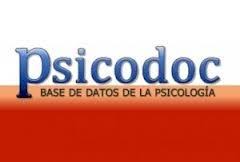Authors who publish in this journal agree to the following terms:
Acta Colombiana de Psicología complies with international intellectual property and copyright laws, and particularly with Article No. 58 of the Political Constitution of Colombia, Law No. 23 of 1982, and the Agreement No. 172 of September 30, 2010 (Universidad Católica de Colombia Intellectual Property Regulation).
Authors retain their copyright and grant to the Acta Colombiana de Psicología the right of first publication, with the work registered under Creative Commons attribution license, which allows third parties to use the published material, provided they credit the authorship of the work and the first publication in this Journal.
Abstract
In this paper, the effect of correspondence history between contingency and contingency descriptions on the behavior of choice under the self-control paradigm is analyzed in 85 participants between the ages of 10 and 11, through two intrasubject experiments, one carried out in a laboratory context and another in a simulated natural situation. The results indicate that it is possible to affect the behavior of choice between an immediate reinforcer of lesser magnitude and a delayed one of greater magnitude in favor of the second alternative, from an experimental history of correspondence between descriptions of contingencies and contingencies. In both experiments, most of participants chose the delayed reinforcer after undergoing correspondence tests between descriptions and contingencies, and the immediate reinforcer after facing the correspondence absent trials, even though the training situations were formally and functionally different in relation with the task established to evaluate the conduct of choice. The results are analyzed in light of the “Relational Frame Theory”, specifically, in relation with the alteration of the functions of the language.

References
Alós, F., Guerrero, M., Falla, D., & Amo, A. (2013). Estímulos compuestos, discriminaciones simples y transferencia del aprendizaje en nuevas discriminaciones simples y condicionales. International Journal of Psychology and Psycho- logical Therapy, 13(1), 97-112. Recuperado de http://www.ijpsy.com/volumen13/num1/349/estmulos-compuestos-dis-criminaciones-simples-ES.pdf.
American Psychological Association. (2012). Lo que se necesi- ta saber acerca de la fuerza de voluntad: la ciencia psi- cológica del autocontrol. Recuperado de http://www.apa.org/helpcenter/willpower-spanish.pdf.
Barnes-Holmes, D., Rodríguez, M., & Whelan, R. (2005). La teoría de los marcos relacionales y el análisis experimen- tal del lenguaje y la cognición. Revista Latinoamericana de Psicología, 37(2), 255-275. Recuperado de http://www.redalyc.org/articulo.oaid=80537203.
Benabou, R., & Tirole, J. (2004). Willpower and Personal Rules. Journal of Political Economy, 112(4), 848-887. Recuperado de http://www.princeton.edu/~rbenabou/papers/JPE2004.pdf.
Binder, L., Dixon, M., & Ghezzi, P. (2000). A procedure to teach self-control to children with attention deficit hyper- activity disorder. Journal of Applied Behavior Analysis, 33(2), 233-237. Recuperado de https://www.ncbi.nlm.nih.gov/pmc/articles/PMC1284241/.
Cáceres, D., Salazar, I., Varela, M., & Tovar, J. (2006). Consumo de drogas en jóvenes universitarios y su relación de riesgo y protección con los factores psicosociales. Universitas Psychologica, 5(3), 521-534. Recuperado de http://www.scielo.org.co/pdf/rups/v5n3/v5n3a08.pdf.
Corral, V. (2006). Contribuciones del análisis de la conducta a la investigación del comportamiento pro-ecológico. Revista Mexicana de Análisis de la Conducta, 32(002), 111-127. Recuperado de http://redalyc.uaemex.mx/pdf/593/59332203.pdf.
Dixon, M., & Cummings, A. (2001). Self-control in children with autism: response allocation during delays to reinforcement. Journal of Applied Behavior Analysis, 34 (4), 491- 495. Recuperado de http://www.ncbi.nlm.nih.gov/pmc/articles/PMC1284343/pdf/11800188.pdf.
Dixon, M., Rehfeldt, R., & Randich, L. (2003). Enhancing tolerance to delayed reinforcers: The role of intervening activities. Journal of Applied Behavior Analysis, 36(2), 263- 266. Recuperado de http://www.ncbi.nlm.nih.gov/pmc/articles/PMC1284440/pdf/12858992.pdf.
García, C. (2008). Riesgos del uso de internet por niños y adolescentes. Estrategias de seguridad. Acta Pediátrica México, 29(5), 273-279. Recuperado de http://nietoeditores.com.mx/download/actapediatrica/Sep-Oct2008/ActaPediat-273-9.pdf.
Gómez, I., & Luciano, C. (1991). Autocontrol en niños: un estudio experimental sobre dos procedimientos en la adquisición de conductas de espera. Psicothema, 3(1), 25-44. Recuperado de http://www.psicothema.com/psicothema.aspid=2002.
Gómez, I., & Luciano, C. (2000). Autocontrol a través de reglas que alteran la función. Psicothema, 12(003), 418-425. Recuperado de http://redalyc.uaemex.mx/src/inicio/ArtPd-fRed.jspiCve=72712314.
Gómez, M., López, F., & Mesa, H. (2007). Teoría de los marcos relacionales: algunas implicaciones para la psicopatología y la psicoterapia. International Journal of Clinical and Health Psychology, 7(2), 491-507. Recuperado de http://redalyc.uaemex.mx/redalyc/pdf/337/33717060015.pdf.
González, J., Ávila, R., Juárez, A., & Miranda, P. (2011). ¿Es la ?abstención? de comer comida disponible un ejemplo de conducta de autocontrol en palomas? Acta comportamentalia, 19(3), 255-267. Recuperado de http://redalyc.uaemex.mx/src/inicio/VentanaResumenTabs.jspclaveArt=274520129001.
Grosch, J., & Nuringer, A. (1981). Self-control in pigeons under the Mischel paradigm. Journal of applied behavior analysis, 35(1), 3-21. Recuperado de http://www.ncbi.nlm.nih.gov/pmc/articles/PMC1333016/.
Guevremont, D., Osnes, P., & Stokes, T. (1986). Preparation for effective self-regulation: The development of generalized verbal control. Journal of Applied Behavior Analysis, 19(1), 99-104. Recuperado de http://www.ncbi.nlm.nih.gov/pmc/articles/PMC1308046/.
Hernández, A., & Sandoval, M. (2003). La actividad simbólica humana: una revisión de las tendencias contemporáneas en el análisis del comportamiento verbal. Acta Colombiana de Psicología, 1(10), 73-87. Recuperado de http://www.redalyc.org/pdf/798/79801006.pdf.
Kerlinger, F., & Lee, H. (2002). Investigación del comportamiento (4a Ed.). México: McGraw-Hill.
Luciano, C., Gómez, S., Hernández, M., & Cabello, F. (2001). Alcoholismo, evitación experiencial y Terapia de Aceptación y Compromiso (ACT). Análisis y Modificación de Conducta, 27(113), 333-371.
Luciano, C. (1992). La conducta verbal a la luz de recientes investigaciones. Su papel sobre otras conductas verbales. Psicothema, 4(2), 445-468. Recuperado de http://redalyc.uaemex.mx/src/inicio/ArtPdfRed.jspiCve=72704210.
Luciano, C., Valdivia, S., Gutiérrez, O., & Páez, M. (2006). Avances desde la terapia de aceptación y compromiso (ACT). Edupsykhé, 5(2), 173-201. Recuperado de http://www.ucjc.edu/pdf/publicaciones/edupsikhe/vol-5/cap3_vol5-2.pdf.
Martin, G., & Pearl, J. (2006). Modificación de Conducta. Qué es y cómo aplicarla. Madrid: Prentice Hall.
Martínez, H., Ortíz, G., & González, A. (2007). Efectos diferenciales de instrucciones y consecuencias en ejecuciones de discriminación condicional humana. Psicothema, 19(1), 14-22. Recuperado de http://dialnet.unirioja.es/servlet/articulo-codigo=2231448.
Montgomery, W. (2008). Teoría, investigación y aplicaciones clínicas del autocontrol. Psicothema, 11(2), 215-225. Recuperado de http://www.scielo.org.pe/pdf/rip/v11n2/a13v11n2.pdf.
Msetfi, R., Wade, C., & Murphy, R. (2013). Context and Time in Causal Learning: Contingency and Mood Dependent Effects. PLoS ONE, 8(5), 1-15. Recuperado de http://www.readcube.com/articles/10.1371%2Fjournal.pone.0064063.
Naciones Unidas (2012). Informe mundial sobre las Drogas, 2012. Nueva York: Oficina contra la Droga y el Delito. Recuperado de https://www.unodc.org/documents/data-and-analysis/WDR2012/WDR_2012_Spanish_web.pdf.
Organización Mundial de la Salud & Ministerio de Sanidad y Consumo (2006). Tabaco. Mortífero en todas sus formas. Recuperado de http://www.who.int/tobacco/resources/publications/wntd/2006/translations/Brochure_Spanish.pdf.
Organización Mundial de la Salud (2010). 10 datos sobre medio ambiente y prevención de enfermedades. Recuperado de http://www.who.int/features/factfiles/environmental_health/es/index.html.
Organización Mundial de la Salud (2012). Obesidad y sobrepeso. Recuperado de http://www.who.int/mediacentre/factsheets/fs311/es/index.html.
Ortiz, G., & Cruz, Y. (2011). El papel de la precisión instruccional y la retroalimentación en la ejecución y descripciones poscontacto. Revista Mexicana de Análisis de la Conducta, 37(1), 69-87. Recuperado de http://www.redalyc.org/pdf/593/59319102006.pdf.
Ortiz, G., González, A., Rosas, M., & Alcaraz, F. (2006). Efectos de la precisión instruccional y la densidad de retroalimenta- ción sobre el seguimiento, la elaboración y transmisión de descripciones en tareas de discriminación condicional. Acta Comportamentalia, 14(2), 103-130. Recuperado de http://www.redalyc.org/articulo.oaid=274520152001.
Ruiz, D., & Gómez, I. (2010). Transformación de funciones: Marcos de coordinación y oposición de acuerdo con equivalencia. Revista Latinoamericana de Psicología, 42(2), 311-322. Recuperado de http://www.redalyc.org/articulo.oaid=80515381011.
Ruiz, D., & Gómez, M. (2016). Papel del control instruccional en el estudio de las tendencias de regulación verbal. Universitas Psychologica, 15(2), 135-152. Recuperado de http://revistas.javeriana.edu.co/index.php/revPsycho/article/viewFile/11986/13902.
Sidman, M. (1971). Reading and auditory-visual equivalences. Journal of Speech and Hearing Research, 14, 5-13. Recuperado de http://jslhr.pubs.asha.org/article.Aspx-articleid=1749398.
Skinner, B. (1981). Conducta verbal. México: Trillas.
Theler, R., & Shefrin, H. (1981). An economic theory of self- control. Journal of Political Economy, 89(2), 392-406. Re- cuperado de http://www.jstor.org/discover/10.2307/1833317uid=3737808&uid=2129&uid=2&uid=70&uid=4&sid=21101153672451.
Törneke, N., Luciano, C., & Valdivia, S. (2008). Comportamiento gobernado por reglas y problemas psicológicos. Journal of Psychology and Psychological Therapy, 8(2), 141-156. Recuperado de http://conductual-contextual.es/ files/7713/3881/5865/Torneke_Luciano_ValdiviaESPAOL. pdf.
Valdivia, S., & Luciano M. (2006). Una revisión de la alteración de las propiedades reforzantes de los eventos en hu- manos. International Journal of Psychology and Psychological Therapy, 6(3), 425-444. Recuperado de http://www.redalyc.org/articulo.oa-id=56060310.
Wechsler, D. (1981). WISC-R. Escala de inteligencia revisada para el nivel escolar. México: El Manual Moderno.
Wilson, K., & Luciano, C. (2007). Terapia de aceptación y compromiso (ACT). Madrid, España: Pirámide.
Zentall, T., Galizio, M., & Critchfied, T. (2002). Categoritazion, concept learning, and behavior analysis: an introduction. Journal of the Experimental Analysis Behavior, 78(3), 237- 248. Recuperado de https://www.ncbi.nlm.nih.gov/pmc/articles/PMC1284898/.


































